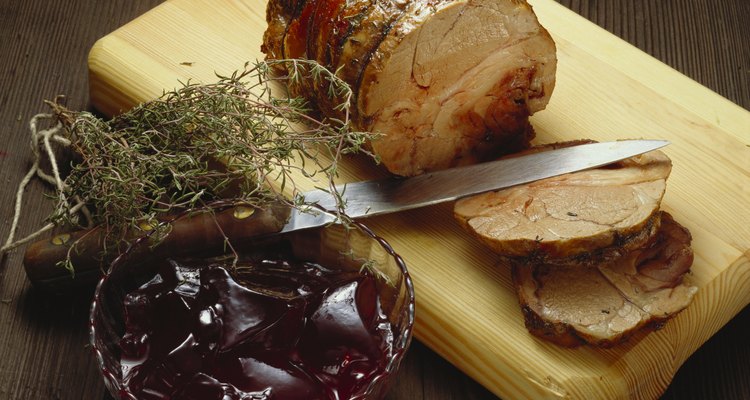
Preparing food ahead of time and reheating it later is a fundamental skill for professional cooks, and it's pretty useful for home cooks as well. When mealtime rolls around, you can be poised and confident knowing that the bulk of your work is done and there shouldn't be any unhappy surprises. For example, you might prepare your roast the previous day, then refrigerate it until needed. The key to doing this successfully is close attention to food safety. Cooling and reheating meat safely requires proper monitoring of time and temperature.
Cooking and Cooling
Step 1
Select your roast with cooling and reheating in mind. The shape is more important than weight. Roasts cut in a relatively flat or cylindrical shape will cook, cool and reheat more readily than round or square cuts.
Step 2
Season and prepare the roast using your favorite recipe. Remove it from the oven when it reaches a degree of doneness just lower than your usual preference. For example, if you like your beef medium, you should take it out while it's medium-rare. Pour off and refrigerate the drippings.
Step 3
Transfer the roast to a large plate or serving platter and place it in a well-ventilated spot. Insert an instant-read thermometer into the thickest part of the roast. It should cool to 70 degrees Fahrenheit within two hours to remain within food safety guidelines. If the roast weighs 4 pounds or more, it's best to cut it into smaller pieces of approximately 2 pounds.
Step 4
Wrap the cooled pieces of roast in airtight packaging, such as plastic film wrap, and place them in your refrigerator. Distribute the pieces of roast into the back corners of your fridge, where the air is coldest and the opening and closing of the door will have the least effect.
Step 5
Refrigerate the roast overnight, or until needed.
Reheating the Roast
Step 1
Preheat your oven to 350 degrees Fahrenheit. Remove the roast or pieces of roast from your refrigerator and and unwrap them.
Step 2
Set out one square of heavy-duty foil on your countertop for each piece of roast, and line it with a piece of parchment paper. Place a piece of roast on each. Remove the solidified fat from your reserved drippings, and top each piece of roast with 2 to 3 tablespoons of drippings. Lift the edges of the foil, and roll and crimp them to make a tight parcel.
Step 3
Put the parcels of foil-wrapped roast on a baking sheet and transfer them to the preheated oven. Reheat for 20 to 25 minutes, until an instant-read thermometer inserted into the middle shows that the roast has fully reheated.
Step 4
Rest the pieces of roast in their wrappings for five to 10 minutes, then unwrap and carve them.
Related Articles

How to Cook a Rump Roast Without ...
How to Cook a Steakhouse Roast

How to Cook a 15-Pound Rib Roast
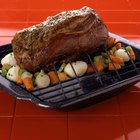
How to Cook a Whole Sirloin Tip Beef ...

How Long Does It Take to Cook a ...
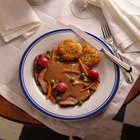
How to Prepare Chuck Tender Roast

How to Marinate a Top Round Roast
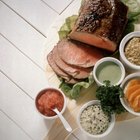
How to Defrost a Frozen 4 Lb Roast
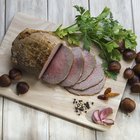
How to Cook a Tender Eye Roast

How to Cook a Roast in a Bag

How Long After Buying a Beef Roast Is ...

How to Cook Prime Rib Using an Oven ...

How to Defrost a Frozen Beef Roast in ...
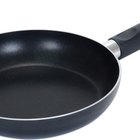
How to Cook Beef Top Round Pot Roast
How to Cook a Spencer Roast

How to Convection Roast a Brisket

How to Cook Fairytale Pumpkin Squash
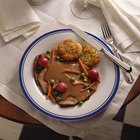
How to Use an Electric Roaster to Slow ...
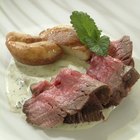
How to Cook a Four-Pound Sirloin Tip ...

Can I Leave a Frozen Pork Roast out ...
References
- On Food and Cooking: The Science and Lore of the Kitchen; Harold McGee
- University of Illinois Extension: Meat Safety For the Consumer
- USDA Food Safety and Information Service: Leftovers and Food Safety
Resources
Tips
- Red meats such as beef and lamb can only be held for one night before they begin to develop stale, "cardboard" flavors. Pork is more forgiving, and can be held for two to three days without ill effect.
- The USDA's Food Safety and Inspection Service recommends cooking whole cuts of meat to an internal temperature of 145 degrees Fahrenheit. That rules out rare or medium-rare doneness levels, which are difficult to achieve in any case when reheating your roast. The recommended temperature for leftovers is 165 F, but only sliced or ground meats require that high a temperature.
Writer Bio
Fred Decker is a trained chef and prolific freelance writer. In previous careers, he sold insurance and mutual funds, and was a longtime retailer. He was educated at Memorial University of Newfoundland and the Northern Alberta Institute of Technology. His articles have appeared on numerous home and garden sites including GoneOutdoors, TheNest and eHow.
Photo Credits
Eising/Photodisc/Getty Images